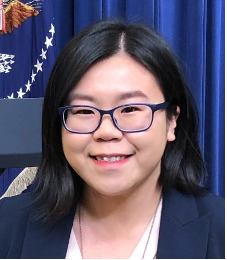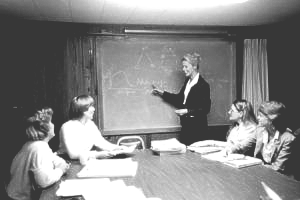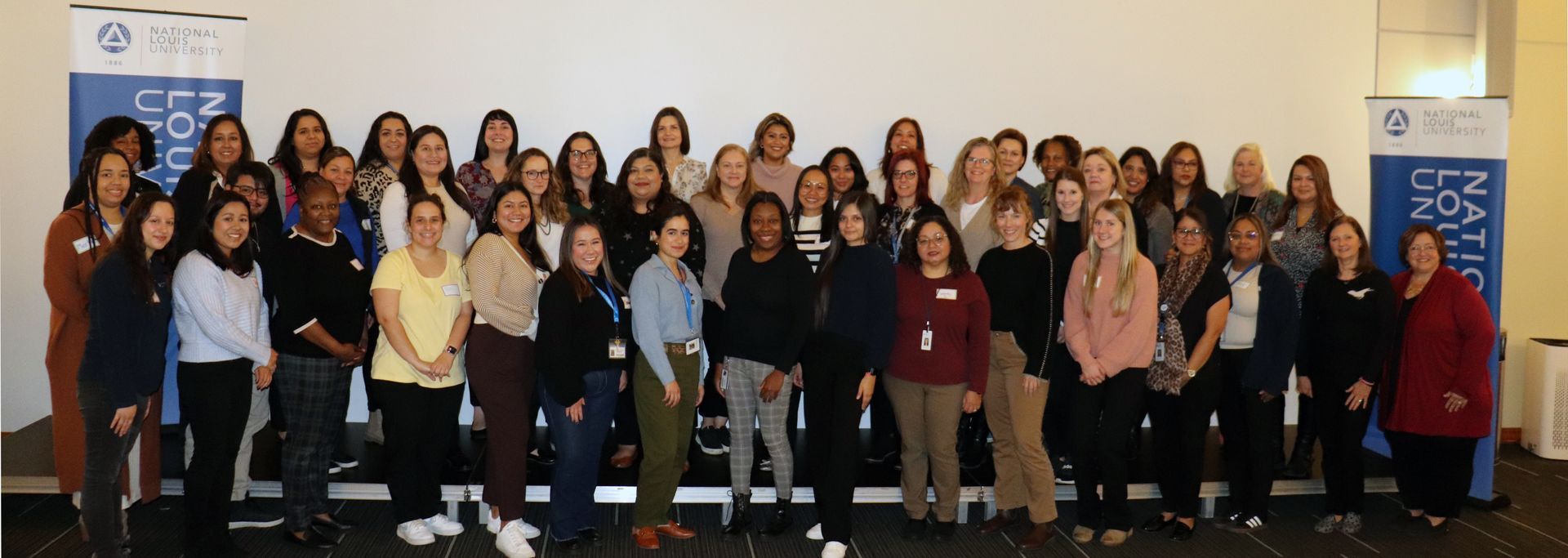BY | June 10, 2020
This document may be printed, photocopied, and disseminated freely with attribution. All content is the property of the McCormick Center for Early Childhood Leadership.
Over the past several years, the early childhood field has shined a spotlight on the importance of professional development. While the light initially focused on teaching staff, the light is now shining even brighter on the importance of building early childhood program leadership capacity. What does this mean for you? It’s time to “Aim” to invest in you!
The McCormick Center for Early Childhood Leadership was one of the first organizations to launch professional development initiatives for early childhood leaders. Three decades later, there are multiple opportunities provided and one in particular, Aim4Excellence™, has just been completely revamped, including updated content, a new design, digital enhancements, and alignment with the competencies of the Whole Leadership Framework.
The McCormick Center’s Whole Leadership Framework was designed to clarify leadership in early childhood education at the program level and consists of three domains: Leadership Essentials, Administrative Leadership, and Pedagogical Leadership. This framework applies to individuals working in schools, centers, and homes, serving children birth through age eight and providing a consistent and comprehensive view of early childhood program leadership.
Let’s look a little more closely at the framework in relation to the nine modules provided by the Aim4Excellence program curriculum:
LEADERSHIP ESSENTIALS
Leadership Essentials include foundational skills in reflective practice, communication, and relationship building—critical for all facets of leadership and often expressed in leadership styles and dispositions.
- Module 1-Leading the Way supports program leaders in understanding the vital role played in creating and sustaining program excellence.
- Module 3-Promoting Peak Performance assists program leaders to understand the central role they play in supervising staff and building a learning community by guiding teachers to become reflective practitioners.
- Module 9-Evaluating Program Quality for Continuous Improvement focuses on the critical role that program leaders provide by modeling for staff and demonstrating to families, a program’s commitment to ongoing inquiry and quality improvement.
ADMINISTRATIVE LEADERSHIP
Administrative Leadership involves maximizing team capacity to develop and sustain an early childhood organization with both operational and strategic leadership functions to include advocacy and connecting with their communities.
- Module 2-Recruiting, Selecting, and Orienting Staff increases program leaders’ understanding of and ability to implement effective, ethical, and lawful employment practices.
- Module 4-Managing Program Operations expands program leaders’ understanding of systems-thinking to evaluate and implement efficient, strategic, and important management systems to alleviate risk within early childhood program settings.
- Module 5-Building a Sound Business Strategy introduces program leaders to the decisions regarding organizational structure, finances, and the way of caring for existing and prospective customers.
PEDAGOGICAL LEADERSHIP
Pedagogical Leadership addresses the complexity of teaching and learning in settings that serve young children, birth through third grade.
- Module 6-Designing Indoor and Outdoor Environments strengthens program and leadership capacity to plan, evaluate, and improve indoor and outdoor environments for infants, toddlers, pre-K, and school-age children to create the highest quality setting for children, families, and staff to thrive.
- Module 7-Supporting Children’s Development and Learning builds capacity to advance children’s development and learning by helping leadership establish and strengthen staff competencies for teaching and caregiving.
- Module 8-Facilitating Responsive Family Engagement increases leadership’s influence, activates strategies to promote family engagement, and strengthens connections between families, programs, and community resources.
As you can see, each module has been carefully crafted to fit within a professional development solution, covering the competencies necessary for early childhood program leadership to increase the quality of services and to advance the field in support of young children and families.
Aim4Excellence is recognized by state professional development systems that link with quality rating and improvement systems (QRIS) across the country, institutions of higher education, scholarship agencies, and is recognized as an alternative pathway for meeting part of the director qualifications for NAEYC program accreditation. Access this working list to see if your state participates and find more information about college credit options.
Empower and invest in yourself by completing all nine self-paced modules to earn the Aim4Excellence National Director Credential, or select one or more modules to build competence in a specific leadership domain. Maximize your leadership competencies by investing in you!
Learn more at: https://mccormickcenter.nl.edu/services/national-director-credential/
References:
Abel, M., Talan, T., & Masterson, M. (2017, January/February). Whole leadership: A framework for early childhood programs. Exchange Magazine. 22-25.
Masterson, M., Abel, M., Talan, T., & Bella, J. (2019). Building on whole leadership: Energizing and strengthening your early childhood program. Lewisville, NC: Gryphon House.
Jane Humphries, Ed.D., is the Aim4Excellence Specialist for the McCormick Center for Early Childhood Leadership at National Louis University. She has earned undergraduate degrees in Family and Child Development, a master’s degree in Early Childhood Education, and a doctoral degree in Occupational and Adult Education from Oklahoma State University. Her experience in the field of early childhood has included serving as director of an NAEYC accredited program, child and parenting specialist, researcher, program administrator of several government-funded initiatives in Oklahoma, college instructor, and published author.





